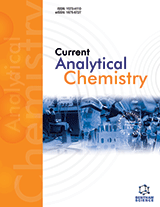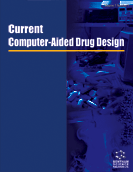Abstract
Introduction: Enzymatic degradation of peptidoglycan, a structural cell wall component of Gram-positive bacteria, has attracted considerable attention being a specific target for many known antibiotics.
Methods: Peptidoglycan hydrolases are involved in bacterial lysis through peptidoglycan degradation. β-N-acetyl-glucosaminidase, a peptidoglycan hydrolase, acts on O-glycosidic bonds formed by N-acetylglucosamine and N-acetyl muramic acid residues of peptidoglycan. Aim of present study was to study the action of β -N-acetylglucosaminidase, on methicillin-resistant Staphylococcus aureus (MRSA) and other Gram-negative bacteria.
Results: We investigated its dynamic behaviour using molecular dynamics simulation and observed that serine and alanine residues are involved in catalytic reaction in addition to aspartic acid, histidine, lysine and arginine residues. When simulated in its bound state, the RMSD values were found lesser than crystal form in the time stamp of 1000 picoseconds revealing its stability. Structure remained stably folded over 1000 picoseconds without undergoing any major change further confirming the stability of complex.
Conclusion: It can be concluded that enzymes belonging to this category can serve as a tool in eradicating Gram-positive pathogens and associated infections.
Keywords: Peptidoglycan hydrolase, beta-N-acetyl-glucosaminidase, docking, molecular dynamic simulations, drug-resistant strains, drugs.
Combinatorial Chemistry & High Throughput Screening
Title:Functional Characterization and Structural Modelling of Peptidoglycan Degrading β-N-acetyl-glucosaminidase from a Dental Isolate of Serratia marcescens
Volume: 24 Issue: 9
Author(s): Aditi Rathee, Anil Panwar, Seema Kumari, Sanjay Chhibber and Ashok Kumar*
Affiliation:
- Center for Systems Biology and Bioinformatics, Panjab University, Chandigarh-160014,India
Keywords: Peptidoglycan hydrolase, beta-N-acetyl-glucosaminidase, docking, molecular dynamic simulations, drug-resistant strains, drugs.
Abstract:
Introduction: Enzymatic degradation of peptidoglycan, a structural cell wall component of Gram-positive bacteria, has attracted considerable attention being a specific target for many known antibiotics.
Methods: Peptidoglycan hydrolases are involved in bacterial lysis through peptidoglycan degradation. β-N-acetyl-glucosaminidase, a peptidoglycan hydrolase, acts on O-glycosidic bonds formed by N-acetylglucosamine and N-acetyl muramic acid residues of peptidoglycan. Aim of present study was to study the action of β -N-acetylglucosaminidase, on methicillin-resistant Staphylococcus aureus (MRSA) and other Gram-negative bacteria.
Results: We investigated its dynamic behaviour using molecular dynamics simulation and observed that serine and alanine residues are involved in catalytic reaction in addition to aspartic acid, histidine, lysine and arginine residues. When simulated in its bound state, the RMSD values were found lesser than crystal form in the time stamp of 1000 picoseconds revealing its stability. Structure remained stably folded over 1000 picoseconds without undergoing any major change further confirming the stability of complex.
Conclusion: It can be concluded that enzymes belonging to this category can serve as a tool in eradicating Gram-positive pathogens and associated infections.
Export Options
About this article
Cite this article as:
Rathee Aditi , Panwar Anil , Kumari Seema , Chhibber Sanjay and Kumar Ashok *, Functional Characterization and Structural Modelling of Peptidoglycan Degrading β-N-acetyl-glucosaminidase from a Dental Isolate of Serratia marcescens, Combinatorial Chemistry & High Throughput Screening 2021; 24 (9) . https://dx.doi.org/10.2174/1386207323999201103204234
| DOI https://dx.doi.org/10.2174/1386207323999201103204234 |
Print ISSN 1386-2073 |
| Publisher Name Bentham Science Publisher |
Online ISSN 1875-5402 |
 12
12
- Author Guidelines
- Bentham Author Support Services (BASS)
- Graphical Abstracts
- Fabricating and Stating False Information
- Research Misconduct
- Post Publication Discussions and Corrections
- Publishing Ethics and Rectitude
- Increase Visibility of Your Article
- Archiving Policies
- Peer Review Workflow
- Order Your Article Before Print
- Promote Your Article
- Manuscript Transfer Facility
- Editorial Policies
- Allegations from Whistleblowers



























